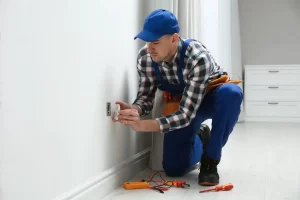The Complete Guide to Dead Outlets at Home and How to Fix Them
What is a Dead Outlet?
A dead outlet is an outlet that has no power. This usually happens when you have a power outage. The outlet is not just a place to plug your electronic devices in. It also serves as an important part of your home’s infrastructure. This means that when the outlet goes dead, you might find yourself in trouble. Dead outlets can be dangerous because they can lead to fires and electrocution. If you have a dead outlet in your house, make sure you fix it right away or call someone who can fix it for you.
How to Fix Dead Outlets in Your Home
Outlets are one of the most significant parts of your home. They are an easy way to keep your items charged and safe from power outages. If you find that your outlet is not working, there is a simple fix you can try that will help get it back up and running again.
How do you fix a dead outlet?
If your outlet is dead, it’s likely because the circuit board inside has been burnt out. To fix this problem, first cut off the power to the outlet by turning off the breaker on the circuit breaker panel or turning off all the breakers on a single circuit breaker. Then remove all the screws holding in place one plate on top and one plate on bottom and pull them apart so that they separate from each other.
Inside, you should find something resembling a silver rectangle with two wires coming out of it: One wire will be black, while the other will be red or orange (depending on what type of outlet you have). On your power cord, the black wire connects to the metal part, while the white or other coloured wire goes to the plastic (two prong) part of the plug. If you’re unsure of what colour your power cord is or if it has a two-pronged plug and not a three-pronged one, use an outlet tester to ensure that it’s properly grounded.
Start Using These Tips Today for Better Electrical Safety
There are a lot of hazards that can happen when we have electrical devices around. When you are not careful, these hazards can cause serious injuries and even death. If you want to avoid such accidents, then you need to make sure that you follow some safety guidelines. You can start by using these tips today for better electrical safety.
Step 1: Never touch the power cord when you are near it
This is one of the most significant safety guidelines that you need to follow. The power cord can be very hot and could cause a serious burn if you are not careful. When we talk about wires, they can also lead to electrocution. What you should do is never touch them at all. Because power cords should stay in place where you plug them in. Accordingly, electricity does not escape and cause harm to others. If there is a chance that the cord will come out of its socket, then make sure that it’s not dangling anywhere. If there is any chance that your child will play with the cord, then you might need to invest in a child-proof cord cover.
Step 2: Keep outlets and cords away from water
Don’t place electrical outlets near any type of liquid, and never place power cords underwater. Whenever it’s time to install a new electrical appliance, make sure that you take precautions against moisture so that there is no unwanted electric shock. For instance, if you are installing a washer or dryer in your home, make sure that the outlet is high enough so that it’s not visible from below when standing on the ground. Generally, outlets should be situated no more than 18 inches (ca. 46 cm) from the floor.
Step 3: Use a GFI breaker
A GFI (ground fault interrupt) circuit breaker is a type of circuit breaker typically found in bathrooms and kitchens. It can help prevent any electric shocks or fire due to moisture. A GFI typically has three prongs. It will trip when power is detected in the presence of moisture on the three prongs, with one exception being that it won’t trip if there are water droplets on top of the wire. If you’re installing a new appliance and aren’t using a GFI, make sure to run a ground wire from the outlet to the sink, if there isn’t one already.
Step 4: Test for power
Once you finish installing the outlet, plug in your appliance. Then test that you can plug it in without tripping the breaker.
Emergency Electrician Southampton
If you’re looking for an emergency electrician in Southampton, look no further than Emergency Electrician Southampton. They offer a range of services to suit your needs.
We are a professional electrician company that offers our services to all of Southampton and the surrounding areas. We are available 24 hours a day, 7 days a week and 365 days a year.

